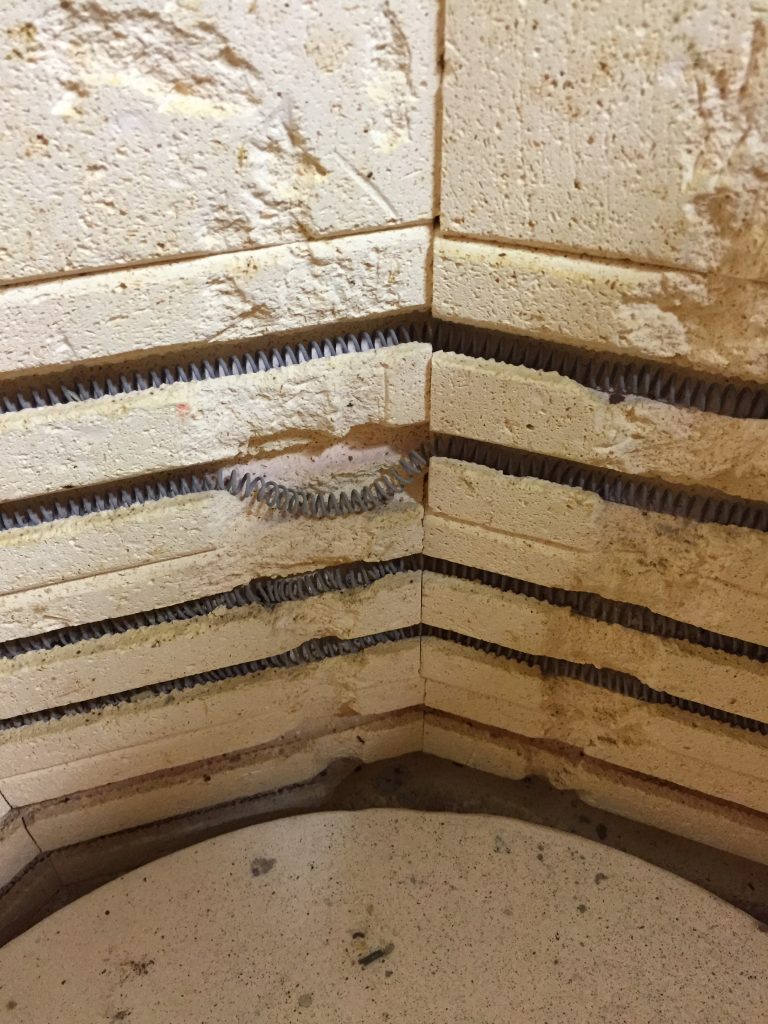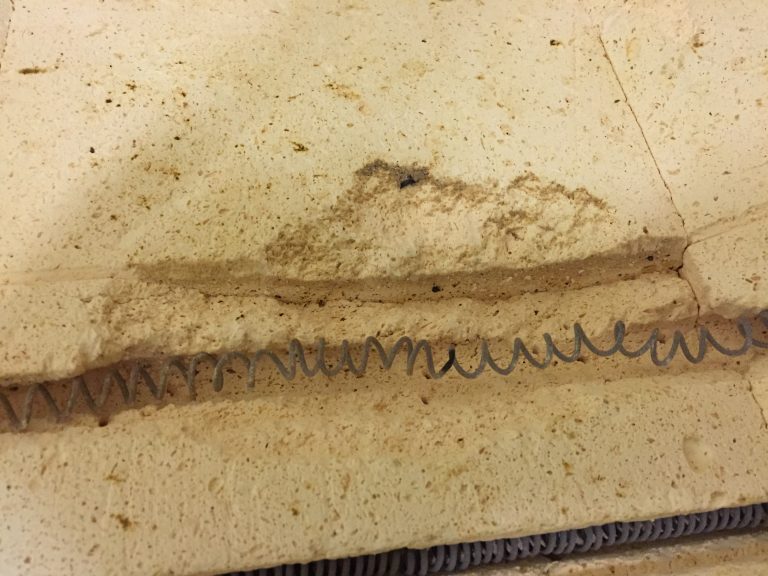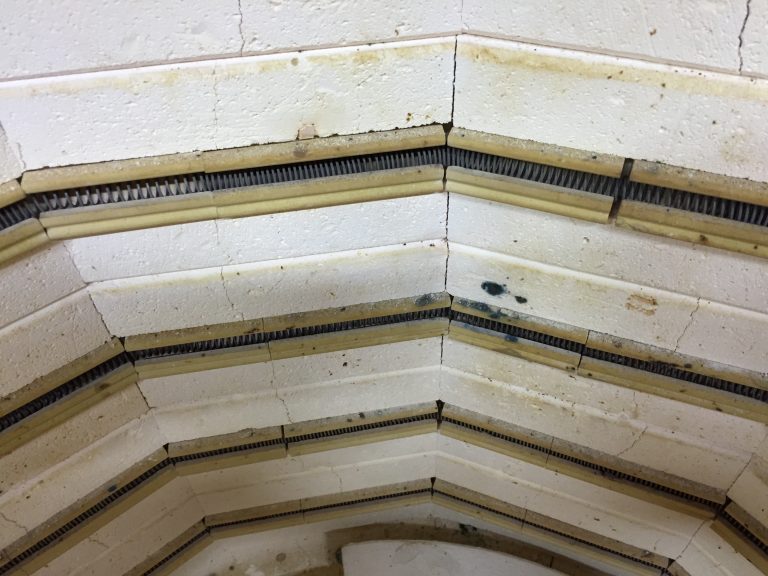Title: Why Broken Brick Often Means a Damaged Kiln
When firebrick breaks inside a kiln, it’s often a sign of deeper structural issues—particularly in kilns that do not use ceramic element holders or channels. While a single chipped or cracked brick might seem minor, widespread damage or missing sections of firebrick should be taken seriously.
The Role of Ceramic Element Channels
Some kilns are built without ceramic element channels, relying instead on grooves cut directly into the soft insulating firebrick. Over time, these grooves can erode or crack due to repeated heating and cooling cycles. Without the added protection of ceramic channels, elements can shift, sag, or even pop out of place, causing further damage to the surrounding brick.
Common Problems in Kilns Without Channels
- Element Groove Failure: Direct-cut grooves tend to wear out more quickly. Elements can exert pressure on the grooves, which leads to cracking or spalling of the firebrick.
- Brick Erosion: With no protective channel, the element itself may contribute to the wear of the firebrick, especially during loading and unloading cycles.
- Element Displacement: Without a channel to hold it in place, the element can become dislodged, creating uneven heating and additional risk of brick damage.
Benefits of Ceramic Element Channels
Ceramic element holders add structural stability and prolong the lifespan of both the elements and the firebrick. They serve as a barrier between the heating element and the soft firebrick, reducing mechanical stress and thermal wear.
Conclusion
Brick damage is more than just cosmetic—it can be a sign of serious internal issues, especially in kilns without ceramic element channels. Choosing a kiln designed with these protective features can help ensure consistent performance and a longer service life.


See where a kiln shelf hit the brick while unloading

How does that element stay up?
In comparison, this L&L Easy-Fire kiln is 9 years old. The controls and wiring needed some tender love but look how the inside of the kiln compares with the competitor’s kiln.



